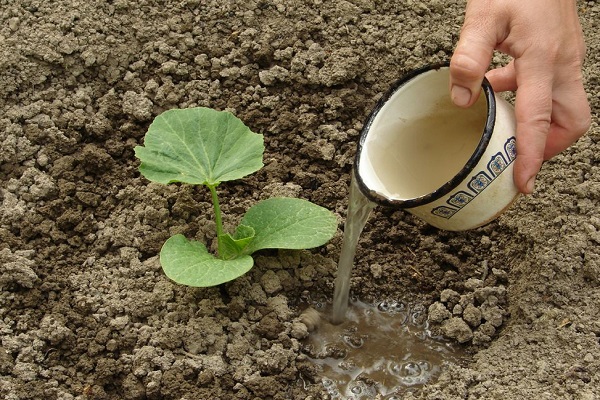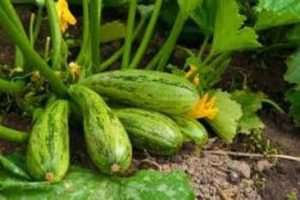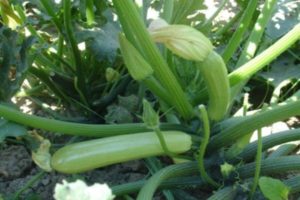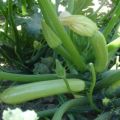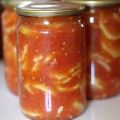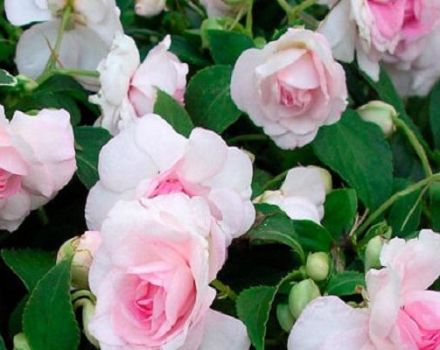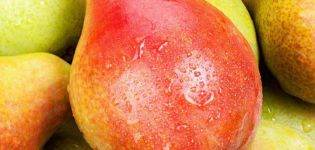Description of the best varieties of round zucchini, features of cultivation and care
The peculiarity of round zucchini is that they are ideal for stuffing. Such an original dish will decorate any table. The process of growing them is as simple as that of ordinary zucchini, difficulties can arise only when choosing a variety. To prevent this from happening, consider the varieties of rounded zucchini.
Content
- 1 History of appearance
- 2 Appearance dimensions
- 3 Taste qualities
- 4 Composition and calorie content
- 5 Advantages and disadvantages of round squash
- 6 Varieties and hybrids of round zucchini
- 7 Small varieties
- 8 Hybrids
- 9 Foreign varieties
- 10 Growing and care
- 11 Soil preparation
- 12 Planting from seeds
- 13 Planting seedlings
- 14 Irrigation scheme
History of appearance
Some people still wonder: are there varieties of large zucchini... However, when looking for information, there are many types of rounded varieties that in appearance resemble a pumpkin.

The first zucchini were bred in Mexico and already at the beginning of the 16th century they began to actively spread throughout Europe. Representatives of "pumpkin" became a favorite dish of Europeans, so more and more gardeners began to plant a crop. Today, there are many varieties of round zucchini that differ in taste, shape and appearance.
Appearance dimensions
In appearance, rounded zucchini more resemble a pumpkin or a small watermelon. The grown fruits reach 2-3 kg, but for cooking it is better to select fruits, the weight of which is no more than two hundred grams, and the diameter is no more than 15 cm.

Mature large-fruited zucchini are characterized by a dense skin, due to which they are stored for a long time in winter. All varieties of round squash tolerate the Russian climate well, therefore their yield is high. The culture does not require special care; feeding, weeding and watering is enough.
Taste qualities
Round zucchini have good taste. They are tender and juicy in taste, without large seeds. Some of the varieties are characterized by a sweetish taste.

Composition and calorie content
100 grams of round zucchini contains 24 kcal, which allows the vegetable to be classified as a low-calorie product.
Pumpkin seeds are very useful for the body, they contain structured water, which improves the activity of the digestive tract, normalizes all digestive processes. In addition, round zucchini contains the following useful components:
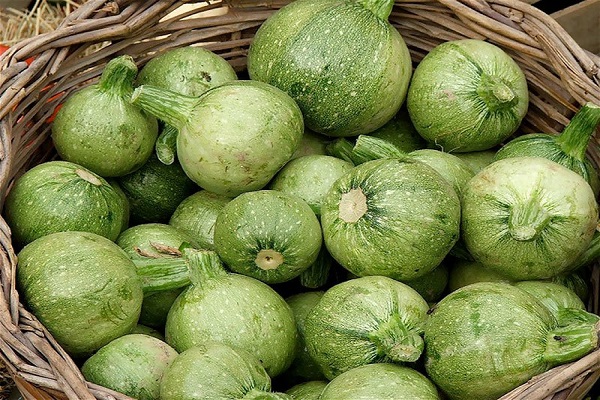
- potassium;
- calcium;
- copper;
- zinc;
- vitamins A, B1, C, PP;
- phosphorus;
- sodium;
- iron;
- manganese;
- cellulose;
- dietary fiber and so on.
All these substances are extremely useful for the body: they stimulate the intestines, remove unnecessary toxins, reduce the level of "bad" cholesterol, and activate metabolic processes.

Advantages and disadvantages of round squash
Round squash is low in calories and is a storehouse of vitamins and nutrients.Unlike oblong "pumpkin", they are more widely used in cooking. Due to their attractive shape, they are most often used for baking and stuffing. They are also used to prepare cutlets, jam, stews and much more.
The beneficial properties of round squash are complemented by the fact that they are extremely useful for pregnant women, since they have a beneficial effect on the intestines.
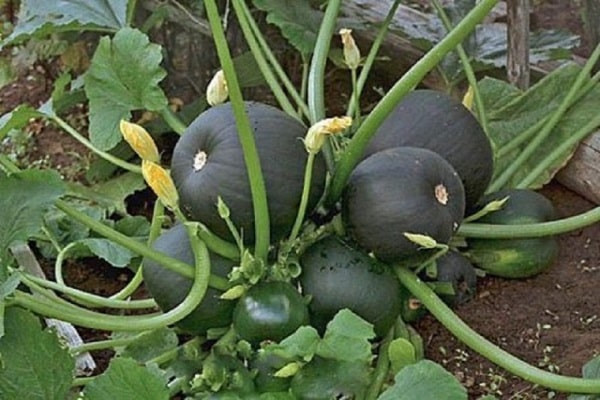
Zucchini is often used in cosmetology. They are added to face masks that moisturize dry skin for a long time.
Round pumpkin seeds do not require special care and are not whimsical to the ground. There were no drawbacks for this culture.

Varieties and hybrids of round zucchini
All varieties of zucchini are divided into large, small, and hybrids. Large pumpkin seeds, as a rule, weigh at least 1 kilogram. Therefore, for cooking, it is better to pluck young fruits until they have reached a large size. There is a wide variety of large round varieties. These include:
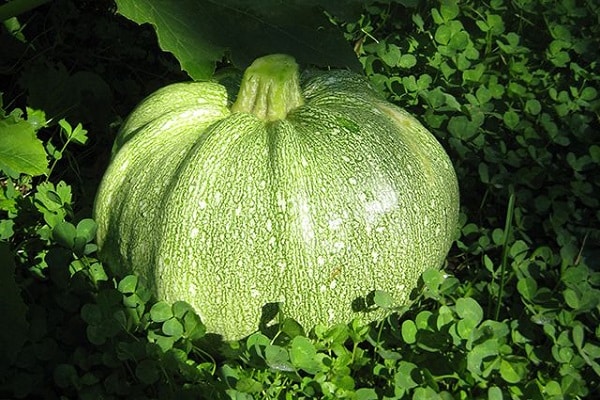
- Ball. It is an early ripening variety that ripens in 50 days. The culture has medium-sized leaves of light green color. Zucchini weight about 1 kg, spotted color, light green. According to its external characteristics, "Ball" resembles a watermelon. Zucchini pulp is juicy, with a minimum of small seeds. The variety is characterized by resistance to powdery mildew and putrefactive processes.
- Watermelon. Another variety that resembles a watermelon in appearance. Full ripening of fruits occurs in autumn. It is a high-yielding crop that produces up to 20 fruits per bush. Since the Watermelon variety is woven and covers several meters of area, the area of its cultivation must be extensive. Fruits reach a weight of 3 kg, and the diameter of young fruits is 9-15 cm.
- The mother-in-law is hospitable. The culture is characterized by leveled round fruits and light green color, which turns white when ripe. The pulp of this variety is very tender. Fruit weight varies from 1.5 to 2.5 kilograms. Up to 10 fruits can be set on one plant at the same time. Recommended for caviar processing, canning and home cooking.
- The sailor. Early ripe variety. Fruits are light green in color with a spotted ribbed surface. Ripening takes 40 days. Fruits weigh up to 1 kg. The white pulp has the most delicate taste. The yield is 5 kg per 1 square meter. Can be grown in all regions.
- Boatswain. Early ripe variety. Against the background of other species, it stands out with an impressive yield and a solid type of fruit. The ripening period takes 40–45 days. Fruits grow up to 3 kg, sometimes up to 4. The pulp has a pronounced zucchini flavor and a light green color. A matured Boatswain can be easily stored all winter.
- Kolobok. Another early ripening variety, the ripening period of which takes 40 days. Light-loving culture that does not require much space. Fruit weight usually does not exceed 1 kg. It is best to use unripe zucchini with a diameter of 10 cm. The gingerbread man resembles a pumpkin both in taste and appearance. Can be grown in any region.
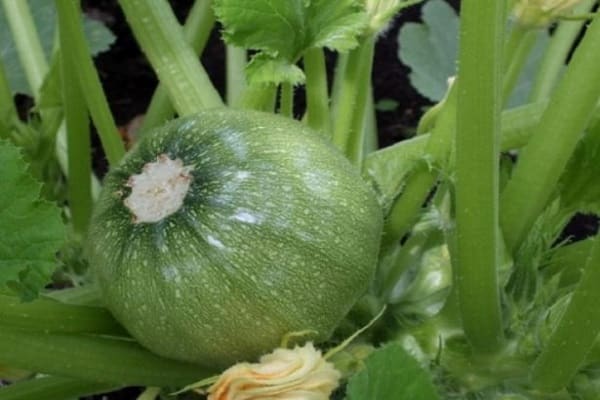
Small varieties
Small-fruited zucchini are characterized by high yields. The fruits grow abundantly, so they are enough for cooking and canning. Small zucchini has a very tender skin and a minimum of seeds. Small-fruited crops include:
- Tintoretto. In terms of external characteristics, the variety resembles the Russian zucchini Ball, only more early ripening (40 days), and with small fruits (on average up to 600 g). The variety belongs to zucchini, at the same time sets up to 6 fruits and grows in a compact bush. The pulp tastes sweet and juicy.
- Orange. A miniature bush that does not take up much space in the garden. The yield is average. At the same time, up to 5 fruits grow with a maximum size of 15 cm. It is important to pick the fruits unripe, as they are rich in vitamins and have a delicate taste.If the zucchini is overripe, it becomes unsuitable for cooking, as the layer of pulp becomes thinner, and the entire middle is occupied by coarse seeds.
- The little cook. An early maturing variety with a yield of 10 kg per 1 square meter. Ripening lasts 40–43 days. The fruits are characterized by light green color and juicy pulp. It is grown by direct sowing in the ground, as well as seedlings. The maximum weight of fruits does not exceed 300 g. Seeds germinate best of all at a temperature of 25-30 degrees.

Hybrids
Zucchini hybrids are suitable for conservation, zucchini caviar and all types of culinary processing. Hybrids include the following varieties:
- Burzhunin F Early maturing variety, ripening period is 45 days. The bush is characterized by vigor and abundance of flowers. The variety has a good yield, presentation and round fruits. Zucchini are dark green, their weight reaches 3 kg. The variety is suitable for greenhouse and open field cultivation. The optimum sowing time is May. The variety needs proper watering, nutrition, temperature and lighting. The yield is 10 kg per 1 square meter.
- Festival F Hybrid variety with decorative appearance and excellent taste. The diameter of the fruit reaches 15 cm. The surface of the zucchini is covered with white-green stripes, where the green color is replaced by yellow as it ripens. The culture is perfectly stored (up to 1 year) without loss of taste. The attractive appearance of the variety should also be noted.

Foreign varieties
Foreign varieties include:
- Tondo di Piacenza. A mid-season variety originally from Italy. It takes 50 days to ripen. Designed for open field sowing. Unripe fruits with a diameter of 10 cm have a special taste. They can be eaten fresh.
- Ronda de Nice. Early maturing native of France. It takes 40 days to ripen. Fruits are light green in color with a thin skin and a diameter of 12-15 cm. For high yields, the first fruits should be picked as early as possible. Unripe fruits are best suited for cooking.
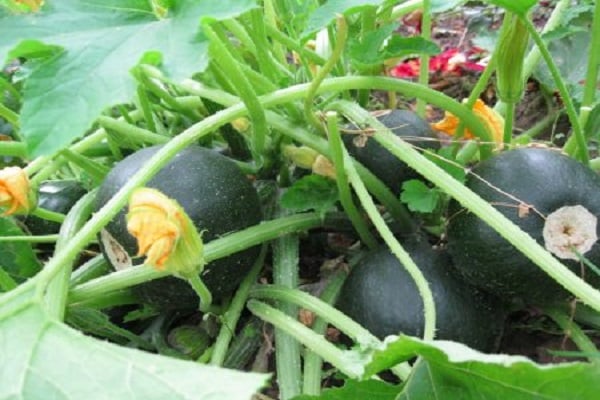
Growing and care
Round zucchini are not whimsical to care for and only need standard procedures: soil preparation, loosening the earth, weeding, watering.
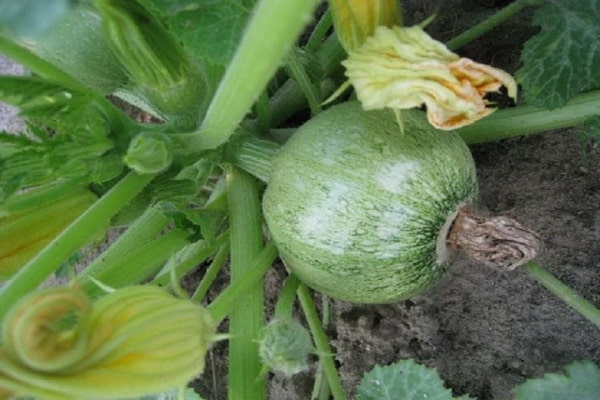
Soil preparation
Before planting, prepare the soil: fertilize with humus, sawdust or peat, add a little mineral fertilizers (wood ash or superphosphate). The plot for zucchini is well dug up and cleared of all kinds of weeds and beetle larvae.
Depending on the variety of zucchini, the seeds are sown in open ground or planted with seedlings.

Planting from seeds
With open sowing, holes are made up to 5 cm deep, at a distance of 70 cm from each other... 2–4 seeds are planted in each hole. If several seeds sprout at once, only one shoot is left.
You can accelerate the germination process of seeds by soaking them in mineral fertilizers or a growth stimulant solution.

Planting seedlings
To obtain an earlier harvest, seedlings are prepared. For this, the seeds are sown in pots with soil 1 month before planting in the ground. Seedlings need fertilization with mullein solution or minerals. If the soil is of poor quality, it is necessary to fertilize 2 times. Seedlings are planted in pre-prepared soil together with a clod of earth, this will not damage the roots.

Irrigation scheme
Watering can be infrequent, but abundant. The optimal watering regime is once every 10 days. The water should not be cold, otherwise the young ovaries will be damaged. When the first fruits appear, the volume of water is doubled. Watering is stopped a week before harvesting, this will preserve the rich taste of zucchini.
